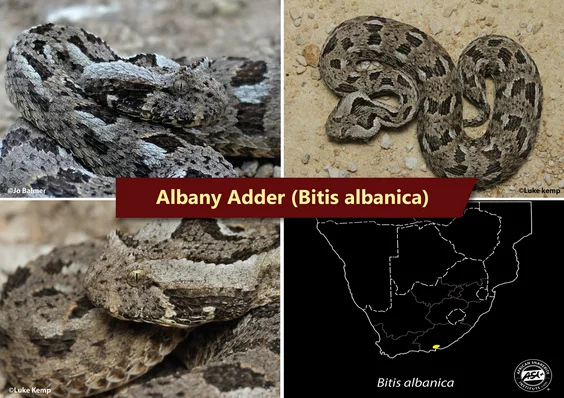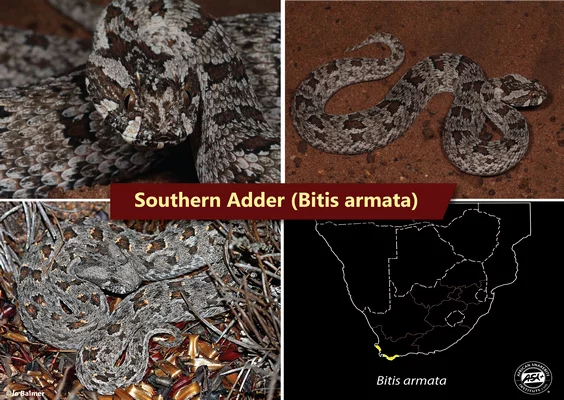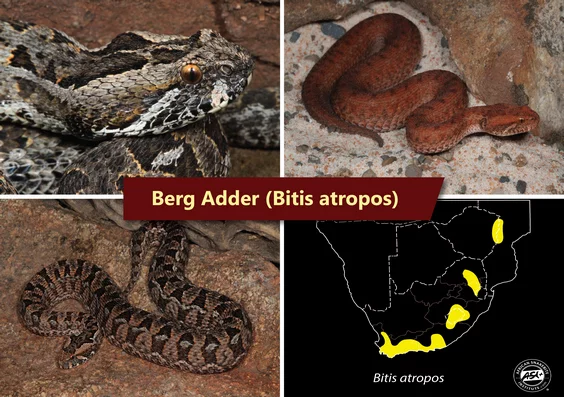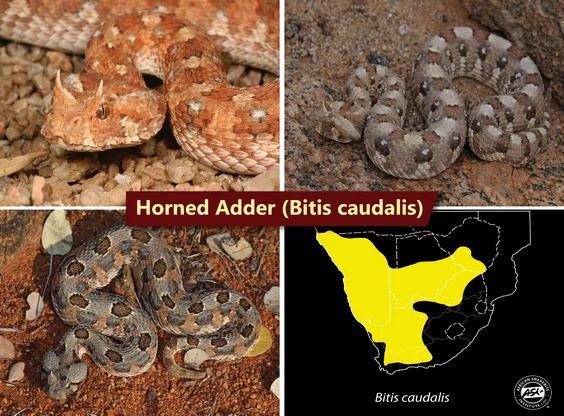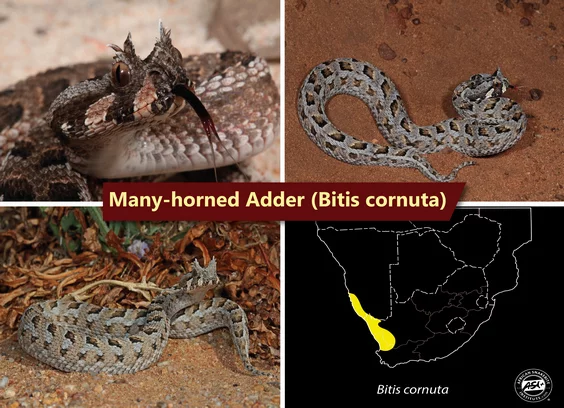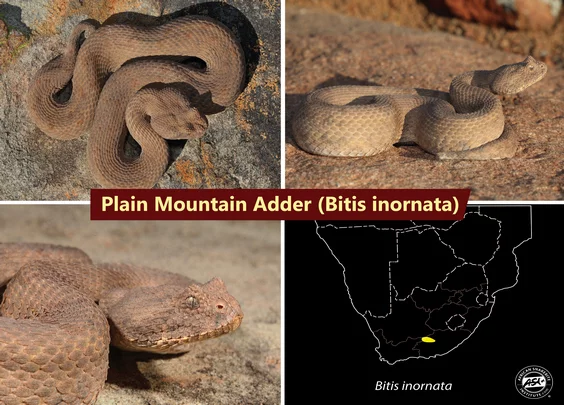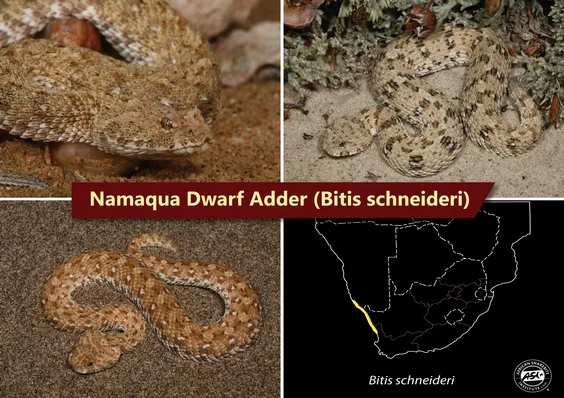The genus Bitis comprises of 18 species restricted to Africa with the exception of the Puff Adder (Bitis arietans) which has a limited distribution on the Arabian Peninsula. Of these 18 species, 12 are considered Dwarf Adders. Southern Africa has 10 of the 12 Dwarf Adders. The two exceptions are the Angolan Dwarf Adder (Bitis heraldica) found in the highlands of Angola and the Kenyan Horned Adder (Bitis worthingtoni) occuring in the highlands of Kenya. The six other species of larger adders are: Puff Adder (Bitis arietans), Gaboon Adder (Bitis gabonica), Rhino Viper (Bitis rhinoceros), River Jack (Bitis nasicornis), Ethiopian Mountain Adder (Bitis parviocula) and the newly described Harenna’s Adder (Bitis harenna) from Ethiopia.
The dwarf adders in southern Africa are very diverse, with some being widespread across southern Africa such as the Horned Adder (Bitis caudalis) and others being restricted to a tiny area or single mountain range such as the Albany Adder (Bitis albanica) or the Plain Mountain Adder (Bitis inornata). Three of the dwarf adders have been listed by the IUCN as of conservation concern. The dwarf adders have many threats, from overgrazing and agricultural development to roadways, industrial developments, mines and illegal collection for the pet trade. Luckily many species occur in provincial or national parks and local reserves, but others still require protection.
We will discuss the ten species of dwarf adder that occur in southern Africa and key features for their identification. In many cases distribution is very important and must be taken into consideration before tackling an identification. Juvenile Puff Adders (Bitis arietans) can sometimes be confused with the dwarf adders and it would be worth getting to know the features of the Puff Adder to avoid confusion.



